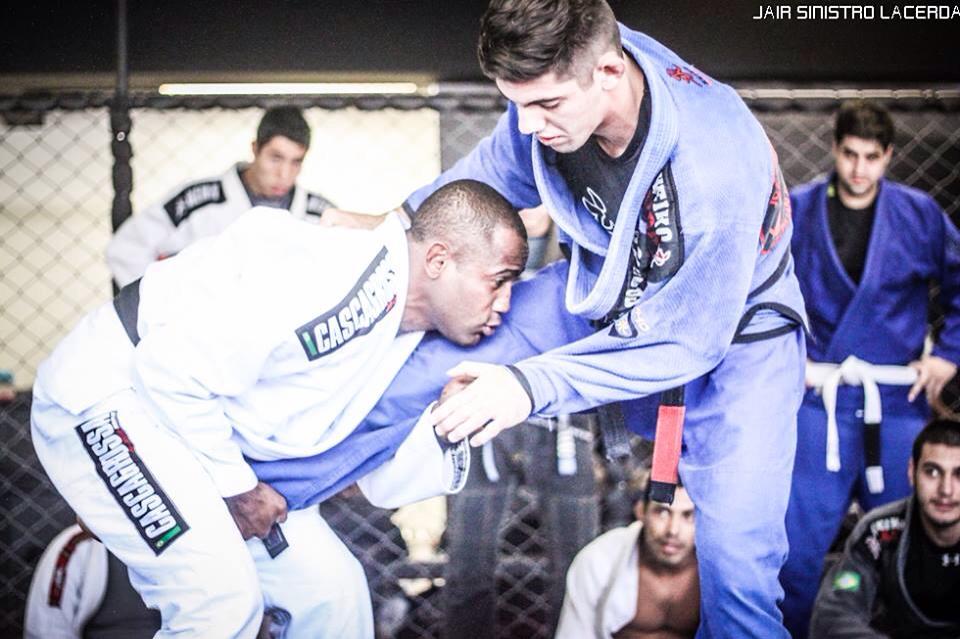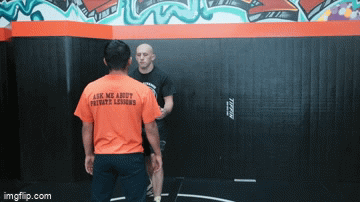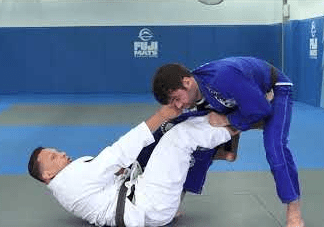
What is the hardest part of BJJ? Finishing submissions? Passing the guard? Holding mount? If I had to wager in, given my personal experience in training and teaching, I’d most definitely choose takedowns. In particular, I’d choose to finish a takedown someone has already set up. What is the secret behind getting a takedown in BJJ? It is pretty much the same as with any other terminal move, like a guard pass, sweep, or a submission: once you start, you need to see it through to the end. The idea with takedowns, since we spend only a fraction of the time working on them, is not to finish every takedown in an original manner, but have ways of finishing that apply to all of them.
Getting a takedown in BJJ is really a special thing. In a sport where you have the option to pull guard, not many opt for the brave version of events, which is standing on the feet and battling for a takedown. It is probably the most chaotic part of Brazilian Jiu-Jitsu, and with the sheer number of techniques borrowed from wrestling, Sambo, and Judo, things usually get overly complicated. Throw in the fact that you can’t just apply any takedown from other grappling martial arts in a BJJ setting, because of counters, submissions, and rulesets, and you have chaos. How do you make turn this chaos into a way that will help you finish any takedown in BJJ?
What Is The Best Takedown In BJJ?
The simplest answer is usually the correct one, according to a philosophy called “Occam’s Razor.” In BJJ, I usually rephrase this so that it reads “the dumbest answer is usually the best option”. And it really is like that in practice. What is the best takedown in BJJ? It is the one that will work. As simple (dumb) as that.

Instead of looking around for obscure takedowns or trying to fit the highest percentage move into your game despite it not fitting won’t get you far. In fact, it’ll just encourage you to keep being/become a guard puller. What you should focus on instead is making the takedowns you can already get to work for you against different types of opponents, and in both Gi and No-Gi. There aren’t plenty of variables here, it is all about adjusting the ways in which you actually finish a takedown you’ve already set up. In other words, there’s more than one way to finish a single leg, and one of them is bound to work.
Three Ways To Finish Every BJJ Takedown
It is simple – when you are struggling with things, turn to the basics. Fundamental techniques will always get you a result. However, looking into fundamental concepts that make those techniques work in the first place, will actually make turn them into those high percentage moves you’re so desperately looking for. When it comes to takedowns, the furthest you can go back is wrestling. Taking a look at what makes wrestling moves successful is a great way of actually finishing a takedown in BJJ.
To that extent, there are three ways you can finish a takedown in wrestling. In fact, there are far more than three, but these are the absolute best options that are easily applicable to any takedown you decide to hunt for. Whether it is a double leg, single-leg, body lock, high crotch, or anything else, you have three different options of getting the fight to the ground. The best part about it is that you can flow from one finish into another and keep them coming in an endless chain as long as you can maintain the takedown position.
Lifting

In order to complete the double leg takedown in BJJ with a lifting finish, you just need to lower your center of gravity, so that it is placed below that of your opponents. At that moment, you just stand up and you’ll pick them off the ground with no effort at all. For the finish, swing both legs to one side of your body. You’ll get both the takedown, and a few applause from the crowd. The same method applies to other takedowns like the single leg, or a high crotch.
Spinning

Blocking

Conclusion
You can use lifting, spinning, and blocking to finish just about any takedown you attempt in Jiu-Jitsu. As long as you’ve got the grip fighting, entries, and takedown position right, the hardest part – finishing, is actually easy if you just juggle between these three options. Apart from working for every takedown in BJJ, they also work as a chain, or even in combination to ensure you get people down. The best part is that you don’t have to remember a bunch of different finishes for every takedown – just give any or all of the three a try, and you’ll get your points and top position!













































